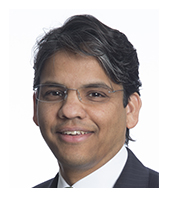Harvard Business Review Cites Cognizant’s Differentiated Approach to Identifying, Developing and Retaining Leadership Talent
 |
In an article analyzing why centralized talent management may not be the most effective at identifying, developing, and retaining leadership talent, Ron Ashkenas, author and a Partner Emeritus at Schaffer Consulting, cites Cognizant as an organization that has successfully made a huge difference in organizational performance. Excerpts:
“A good example is Cognizant, a leading provider of information technology, consulting, and business process outsourcing services. Headquartered in New Jersey, Cognizant is consistently listed among the most-admired and fastest-growing companies in the world, having doubled its operating income in the past five years, while adding over 100,000 employees.

To sustain this trajectory, and manage a company with now close to a quarter of a million associates, CEO Francisco D’Souza has made building a high performing leadership pipeline a critical element of every leader’s job. Because he wants Cognizant’s leaders to grow faster than the business, he holds monthly meetings with his top two executives and the Chief People Officer to review progress on executive talent and the overall leadership pipeline. They also regularly assess whether talent development is aligned with the company’s strategic goals. They review new senior leaders who have been added, executive moves between business areas, who’s being developed for leadership positions, where gaps in leadership remain, and what’s being done to fill them. Carol Cohen, who heads their Executive Talent and Global Leadership Development function, leads these meetings and guides the dialogue on strategic people decisions, investments, and organizational insights – but the decisions are owned by the CEO and his team.

Cognizant also drives accountability for talent throughout the management ranks, since the executive team cannot be the only ones focused on this issue. To do it, the company created a simple one-page talent review document that managers use to review potential leaders annually. The document asks, for example, how the manager’s direct reports stack up against Cognizant’s defined leadership capabilities and what future roles are possible for each direct report, based on their career interests, mobility, and strengths. This provides an easy, enterprise-wide talent snapshot that leaders can use throughout the year to plan targeted development and career moves. Cognizant’s managers can’t pass off their responsibility for managing talent to HR — they are expected to own it.
Of course, not every company can replicate what Cognizant has done. The basic principles, however, can be applied just about anywhere: Identify how talent management will help to drive the business, make sure managers understand the connection between business success and talent development, and hold managers accountable for making it happen.”
Click here to read the article.
